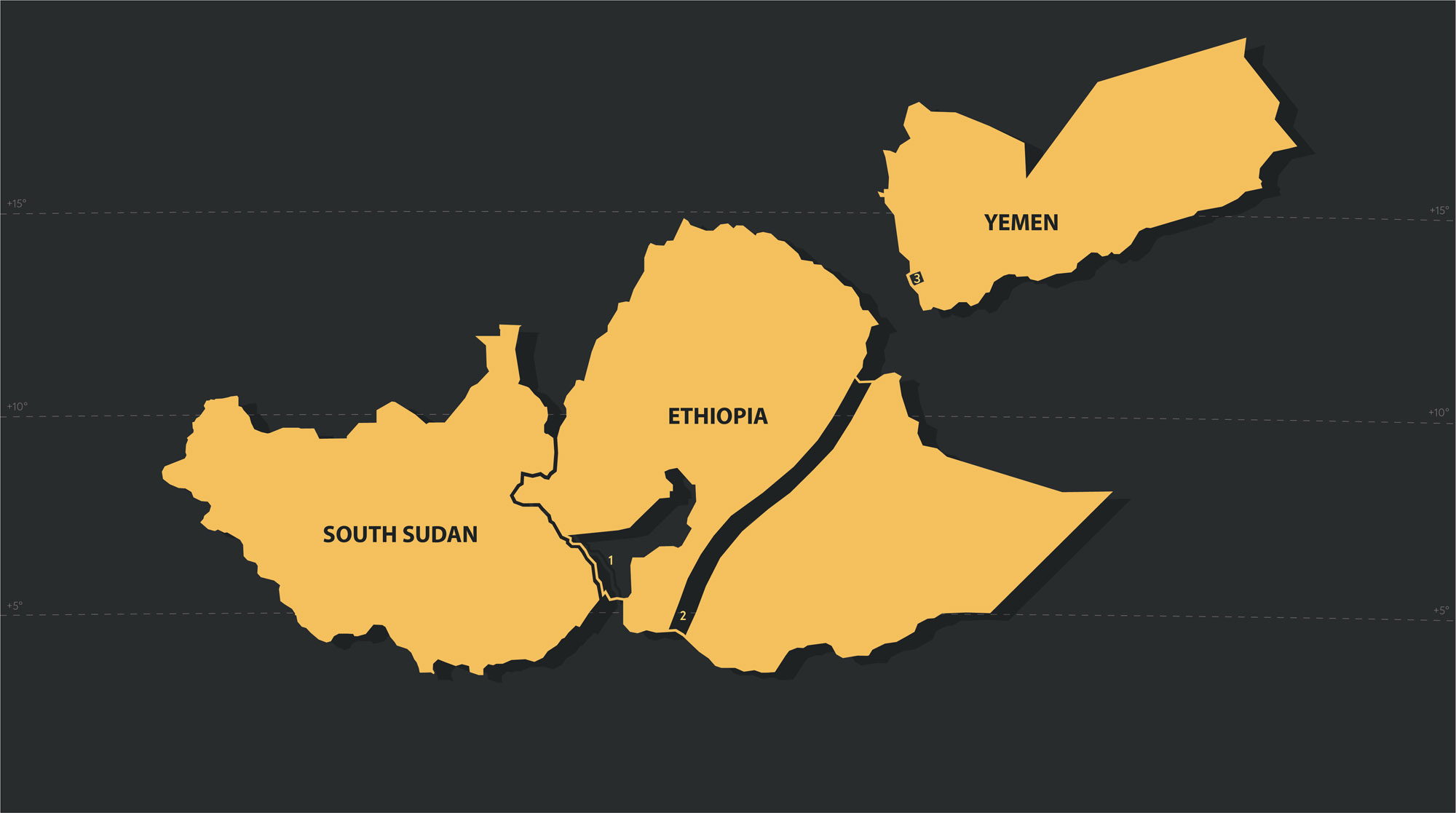Origin – In the cloud forests of Kaffa, in southwest Ethiopia, Coffea arabica grows as an understory plant. Local tradition stipulates where the coffee can be gathered in the forests and who can harvest it. Coffee plants that grow in this type of heavily shaded terroir have a far lower yield than those grown in full sun on most of the intensively farmed large Brazilian plantations.
Many botanists consider southwest Ethiopia to be the birthplace of Arabica coffee, but the debate about its precise origin is not settled. In Southern Sudan, for example, a bit farther down the plateau, wild arabica ignores human-made borders.
The original terroir of coffee, in the ancient forests on the Boma plateau of Ethiopia and South Sudan, was quite different from that of the Arabian peninsula and the Port of Mocca, from where the global coffee trade first emerged in the sixteenth century. In the opinion of coffee’s leading taxonomist, Aaron Davis of Kew Gardens, it was two-way traffic for coffee across the Red Sea (Jeff Koehler, 2016). Coffee arrived in Yemen and, over time, genetic strains adapted to Yemen’s dryer terroir and poor soil. Eventually, these varieties returned to Ethiopia with certain improvements.

This map shows 1. Kaffa, 2. the Rift Valley and 3. Port of Mokha. Wild Arabica is found growing on either side of the Rift Valley between 1000–2000 m.a.s.l.
The Taxonomy of C. Arabica – Why isn’t it Called C. Aethiopica?
In 1753, Carl Linnaeus, the originator of plant taxonomy, “unintentionally hijacked Ethiopia’s proprietorship of coffee,” according to writer-researcher Jeff Koehler. Linnaeus had already arrived at the name Coffea (C.), using his new system of classifying plants. In his definitive work Species Plantarum, he added the word arabica (from Arabia) to the passage about coffee. Koehler explains –
A decade or so later he published Potus Coffea, an eighteen-page pamphlet made of rag scrap with words running to the edges,